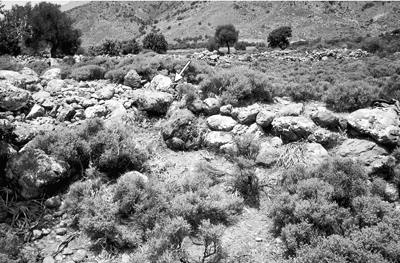October 2005 (109.4)
Article
Ancient Greek Agricultural Terraces: Evidence from Texts and Archaeological Survey
By Simon Price and Lucia Nixon
Although agricultural terraces and terrace walls are a conspicuous feature of the modern dissected terrain of the Mediterranean, it is unclear how extensively the Graeco-Roman rural landscape was terraced. Some scholars have assumed that the past landscape was very like the present one, while others have denied that agricultural terracing was much used in classical antiquity. This article explores two ways of detecting ancient terraces and terrace walls. First, it looks carefully at ancient terminology, using texts drawn from the full array of ancient Greek linguistic registers (both literary texts and inscriptions). The claim that there are no, or almost no, ancient written references to terraces is false, because it looks only at a range of texts that is limited in both date and linguistic register. Second, the article investigates the evidence of archaeological fieldwork, drawing mainly on our own fieldwork in Sphakia. In some cases, scholars have denied that the physical remains of terraces are ancient. This sceptical claim is exaggerated; there are cases where the remains of terraces are Graeco-Roman in date.
More articles like this:
Literary Studies • Landscape Archaeology • Survey • Agriculture • Topography • Crete